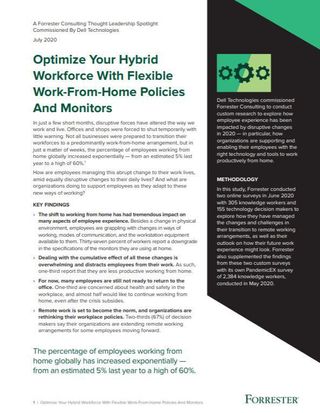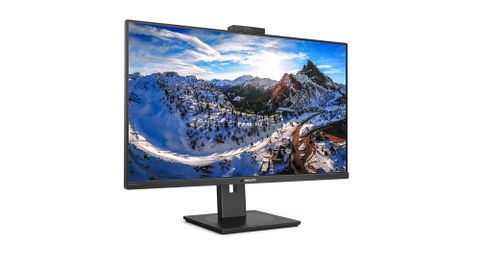IT Pro Verdict
Pros
- +
Huge size
- +
Highly adjustable
- +
Plenty of additional features
Cons
- -
Expensive
Philips is no stranger to big 4K monitors, and we’ve previously given awards to both the Philips Brilliance 328P6 and the 346P1. Where the 329P1H differs from its siblings is that it uses an IPS panel rather than MVA, with the biggest positive effect being that whites appear a fraction whiter.
VA panels are also more amenable to curvature, and, while IPS can bear a certain amount of bending, Philips opts for the straight-backed approach here. If you’re used to a 27in monitor then it may be an initial shock to be staring at a flat 32in 4K screen – while a 5in difference doesn’t sound much, remember that this measurement refers to the diagonal and it’s almost equivalent to having two 27in monitors side by side.
Of course, there are huge benefits to a single-screen approach, not least that you can stretch a window the whole way across when you want to focus. Often, though, we find ourselves favouring a straight split down the middle of the screen with Word or Excel on one side and a web browser on the other. Window snapping is your friend here, but we recommend that you download the PowerToys FancyZones utility if you want a more sophisticated, multi-zoned approach.
As part of Philips’ P-Line of professional monitors, it’s no surprise to see a few other features that will attract those who spend most of their working day at their desk. The first and most crucial is a USB-C port, and in the 329P1H’s case it’s capable of delivering 90W of power – which is more than enough for Windows laptops. However, if you own an Intel-powered MacBook Pro then you might find that it requires more juice still.
Philips adds to office workers’ convenience by turning the monitor into a docking station. Not only are there four USB-A ports for connecting peripherals such as printers, keyboards and mice, but also a Gigabit Ethernet port. Philips even incorporates a pop-up 2MP webcam, complete with support for Windows Hello. The webcam is no match for a dedicated Logitech unit – there’s too much noise and its reds are a little too red – but it’s still likely to be better than the one included in your laptop and is located at the top of the screen, avoiding the now-familiar double-chin problem.

The panel is far better at handling colours than the webcam, although if colour accuracy is your priority then we recommend steering clear of the eight presets Philips provides: options such as Movie and Photo are fine if you’re looking for a temporary boost, but these modes apply processes such as sharpening that favours impact over fidelity. Instead, head for the Colour Temperature option in the OSD menu and select 6500K: that delivered an average Delta E of 0.44 and a maximum of 1.38, which is far better than Philips’ promise of an average Delta E of under two.
There’s an sRGB mode, but, in a change to normal convention, this pushes the screen to its peak brightness – in our test panel’s case, 396cd/m2, although Philips states a typical maximum of 350cd/m2. The trouble is that such brightness is over the top for a typical office, so even though sRGB does indeed tie this panel down to that colour space, by the end of the day you’ll be reaching for your shades. Note that there’s a light sensor, but that pushes you out of sRGB mode and back into 6500K.

Optimise your hybrid workforce with flexible work-from-home policies and monitors
A Forrester Consulting thought leadership spotlight
While this isn’t a panel for colour purists, it does have a wide range. It’s a particularly strong choice for movie lovers, with 93% coverage of the DCI-P3 space (again at 6500K), and while a measured contrast ratio of 1,100:1 isn’t spectacular you won’t miss out on any detail. The two 5W speakers do a respectable job in films and music – again, they’re likely to be significantly better than those in your laptop – but you shouldn’t expect nuance.
A 4ms response time means this is a perfectly good screen for casual gaming too, but anyone serious about 3D action should choose a panel with adaptive sync support and higher refresh rates than 60Hz.
The 329P1H’s final party trick is the ability to pivot 90°, which is quite a feat for a 32in panel, and this is testament to the quality and heft of the base. You can even swivel the screen a full 360° to share its content with desks opposite, while the 180mm height adjustment and 30° of tilt come in particularly useful during video calls when you want to find the just-so angle.
As such, this panel offers much for professionals who want to expand their desktop, or perhaps simplify a two-screen setup into one. It falls short of a Recommended award simply due to its high price, but it’s well worth adding the Philips 329P1H onto a shopping watchlist, as we’ve seen monitor prices fluctuate in response to demand this past year.
Philips 329P1H specifications
| Screen size | 32in |
| Screen resolution | 3,840 x 2,160 |
| Screen technology | 8-bit plus FRC IPS panel, 4ms response time |
| Screen refresh rate | 60Hz |
| Video inputs | DisplayPort 1.4 (HDCP 2.2), 2 x HDMI 2 (HDCP 2.2), USB-C (power delivery up to 90W) |
| Speakers | 2 x 5W speakers |
| Ports | Gigabit Ethernet port, 4-port USB 3.1 hub |
| Adjustability | 90° pivot, -180° to 180° swivel, -5° to 25° tilt, 180mm height adjustment |
| Dimensions | 714 x 280 x 649mm |
| Weight | 11.7kg |
| Warranty | 3yr RTB warranty |
Tim Danton is editor-in-chief of PC Pro, the UK's biggest selling IT monthly magazine. He specialises in reviews of laptops, desktop PCs and monitors, and is also author of a book called The Computers That Made Britain.
You can contact Tim directly at editor@pcpro.co.uk.


